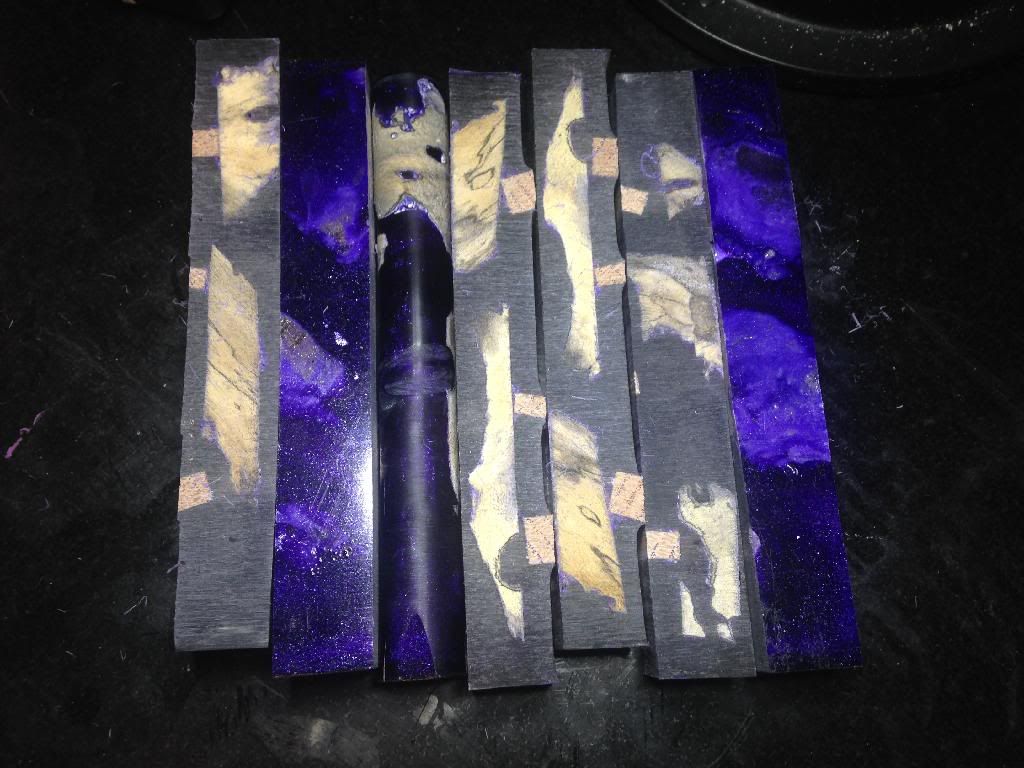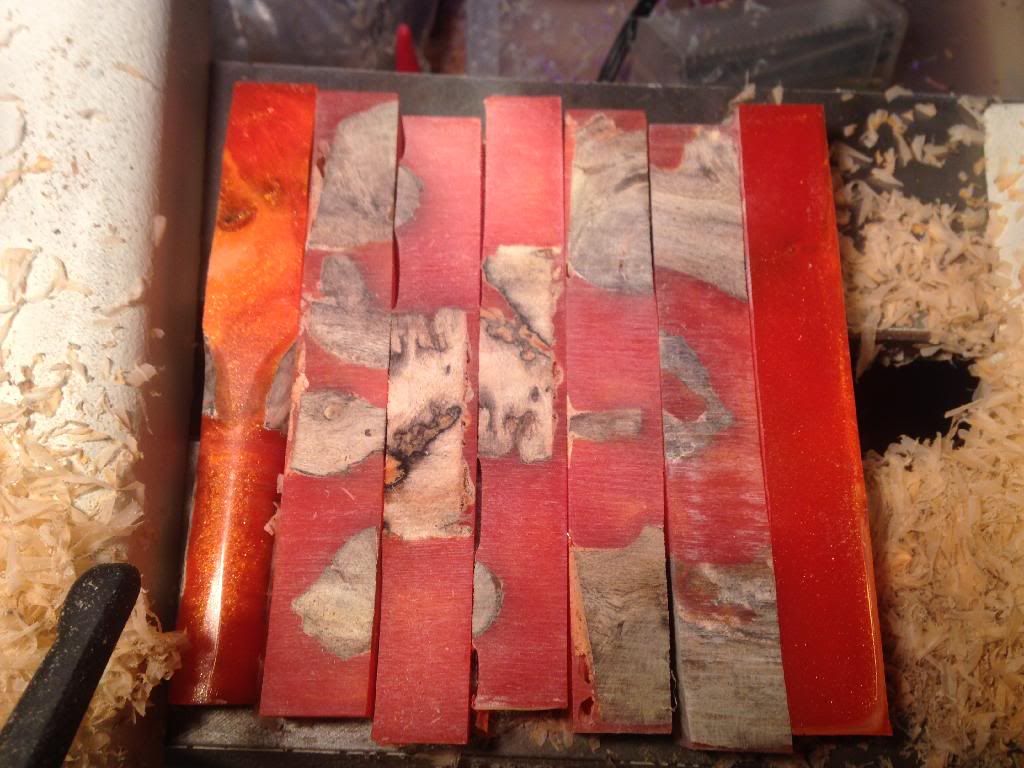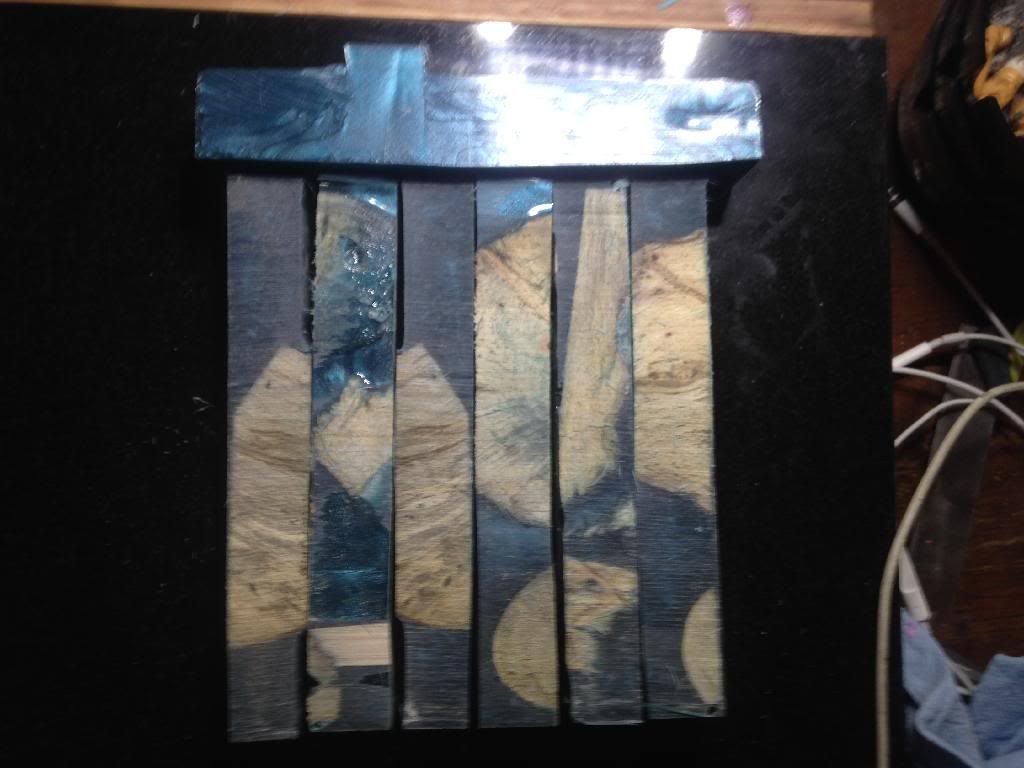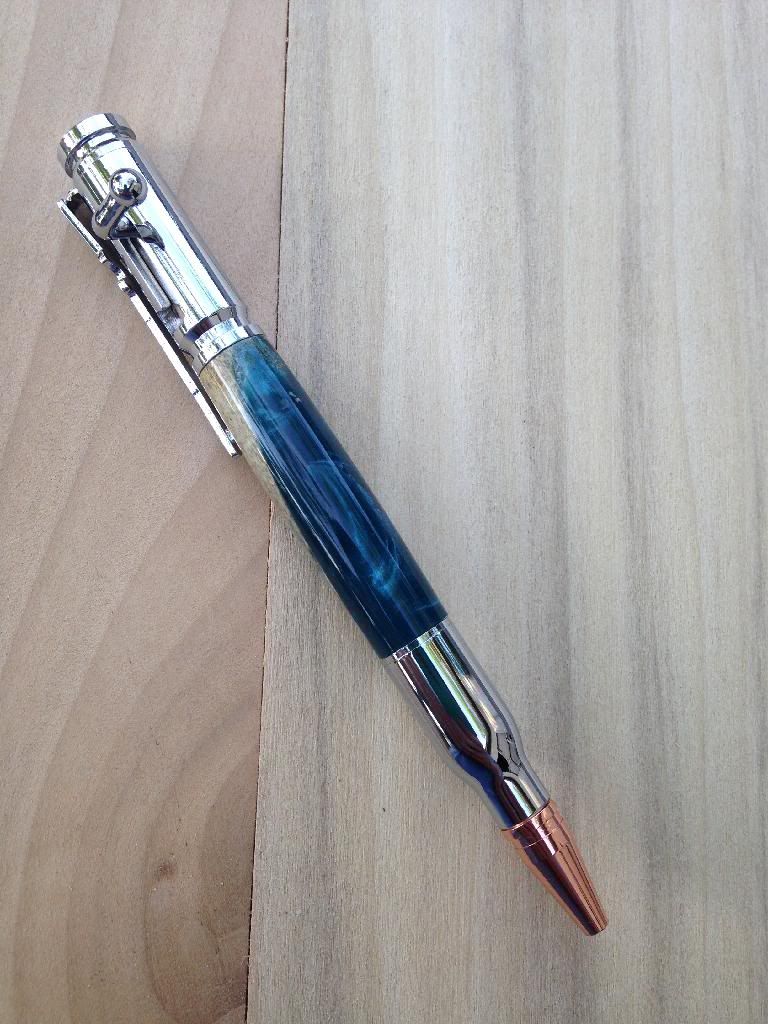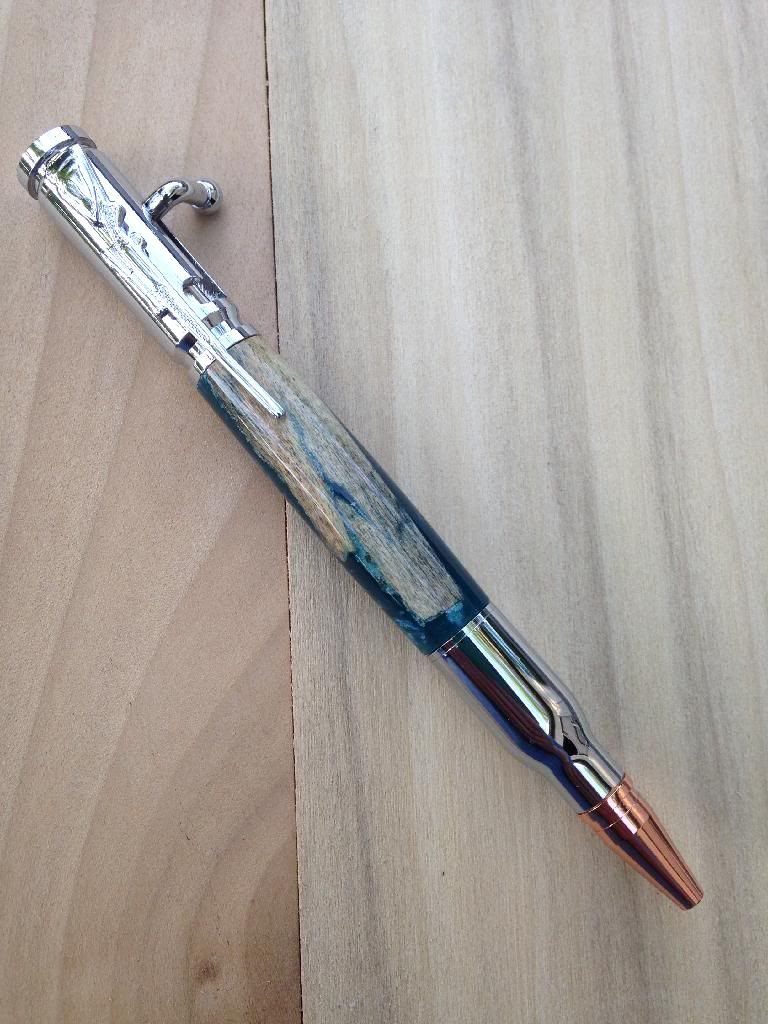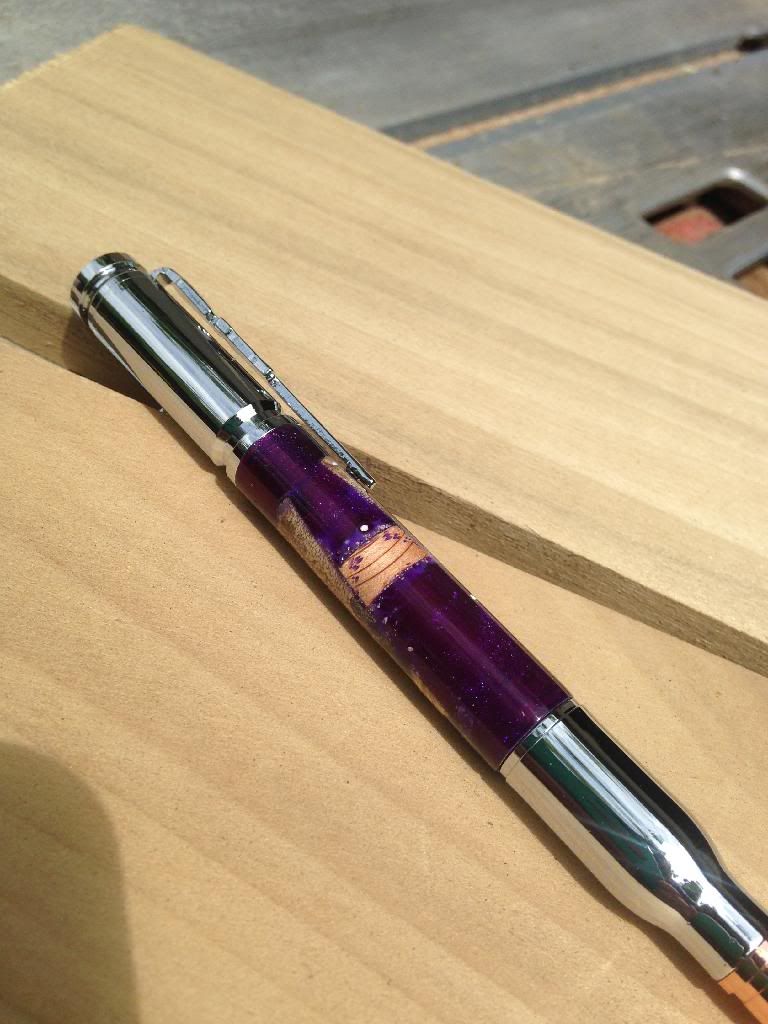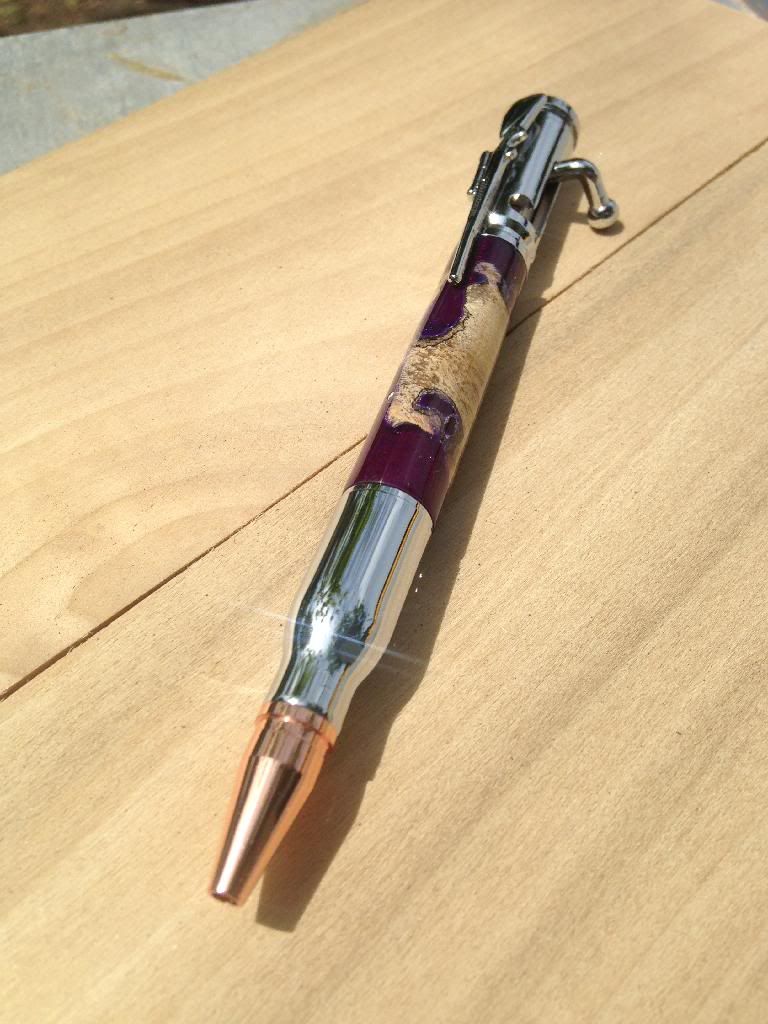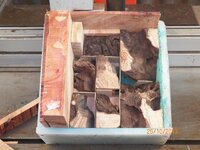Last weekend, I made an investment in a bandsaw and did some yard work. I had a large shrub in my backyard that has frozen several times, and it was finally time for the remainder to go. The stump of said shrub had some spalting and quite a few areas where the grubs had moved in (not too pretty the first go around on the bandsaw DAMHIKT). I cast several sets of worthless wood blanks from the stump, and I still have a lot of material left including the other have of the stump still in the ground!
G'day,
Congratulations on your first trials, they are always exciting however, I would like you to allow me to to give you some important points of "worthless wood" or, the casting of wood and coloured resin regardless of what resin type you are using.
That first batch on the first pic show a typical rookie mistake and one that some people haven't find a solution for, and that is, preventing the wood to float...! Your blanks on that pic show what shouldn't be done, they are now pretty useless for making pens as the strips of wood you used to stop the wood bits to float are now also embedded too deep into the blank, and far too many of them. The second and third lot see not to have that problem but I see also, the wrong way to used those bits of wood you want to cast.
Not all bits of wood are suitable for casting, regardless of you pretty they are, one of the first things that you have to learn is to identify the wood pieces that are suitable for casting, based first on their size and shape, the first rule is that, you don't cast a piece of wood with square or machine cut angles or both ends, one square end is OK and that will be against the mold at one end, you can use 2 of these shaped pieces on a single blank but the ends of those bits of wood that are pointed towards the centre of the blanks, have to have a natural edge or something that does not resemble straight lines, chainsaw teeth marks, bandsaw marks, and so on.
You can use 3 pieces to make one blank, the 2 on each end have the natural edge towards the middle and if those 2 ends are small, enough to add a third bit of wood, you use one that was cut is such ways that has the natural edge on both ends.
Another thing that is wrong with some of your cast blanks is that, you used pieces that have square edges and are thinner than the 20 or 21mm square size, that is exactly what you used on the first top pic/batch and the reason why the wood strips you put on the top of the wood bits to stop them floating, are now there and they don't belong, if you make the bits of wood the normal pen size or slightly bigger (1 mm or 2), you can use those anti floating wood strips compressing the wood down and even if they get covering part of them, doesn't matter as you have to trim that after they are cast so, you clean the face of the blank that was at the bottom of the mold and then trim to correct size and you endup with a clean blank, with nothing more than what you want to be there but cut to correct pen blank sizes.
There are many ways to void floatation of whatever you want to cast, I don't know what sort of material you use on your molds but, if you make them out of the common white kitchen chopping boards, and use a PVC release agent on the mold and let it dry, you can use thick CA and accelerator to very quickly position the wood bits where you want in the mold and they will stay there when you pour the resin and while it cures.
The CA and accelerator together are ideal to make that job a lot faster then using only the thick CA, that can take some time and you have to hold it into place while it dries before you can move to the next bit of wood to glue. What you do is, you put a couple of drops of the thick CA on the bottom of the wood bit you want to put in the mold, and as soon as you do that, you quickly spray the general spot where the piece would go, you have to be accurate and fast as, the soon as the wood gets pressed against the accelerator, the whole thing sets in 3 to 5 seconds, so, you are free to get the next bit done and so on...!
I rely on that technique to do some of my Resifills (same as worthless wood, mutts, and other names given to wood cast with resin), using some type of materials.
I sure understand that you are just starting and you may haven't had any
instructions, suggestions from anyone so, you are just doing what you think is right and the way it is done however, that is not so and most people will see that they aren't right but, prefer not to say anything to the risk of upsetting you and be accused of being a mangrol however, you are most free to call me whatever you wish, what I'm trying to do is to help you but pointing out what you are doing wrong and hope that you see is as positive criticism, and a willingness to see you doing much better blanks than those and save you some money on wasted resin, wood and time.
I sell those type of blanks and I'm not in the least worried that you starting to make good blanks, probably better than mine and sell them here, again, that doesn't bother me at all, whatever the reason you are making those type blanks for, will only work, if you learn to do them right, after that, you are on your own...!
If you have any question, you just say so, if what I said is a little confusing without pics, I will put a few pics together for you, that is no problem at all, there are many other folks out there that either have just started casting or are considering in doing so, they will find this information of most importance to them after all, a like to support anyone that wants to have a go, and experience what is all about and that is, lots of fun and excitement...!
Cheers
George
